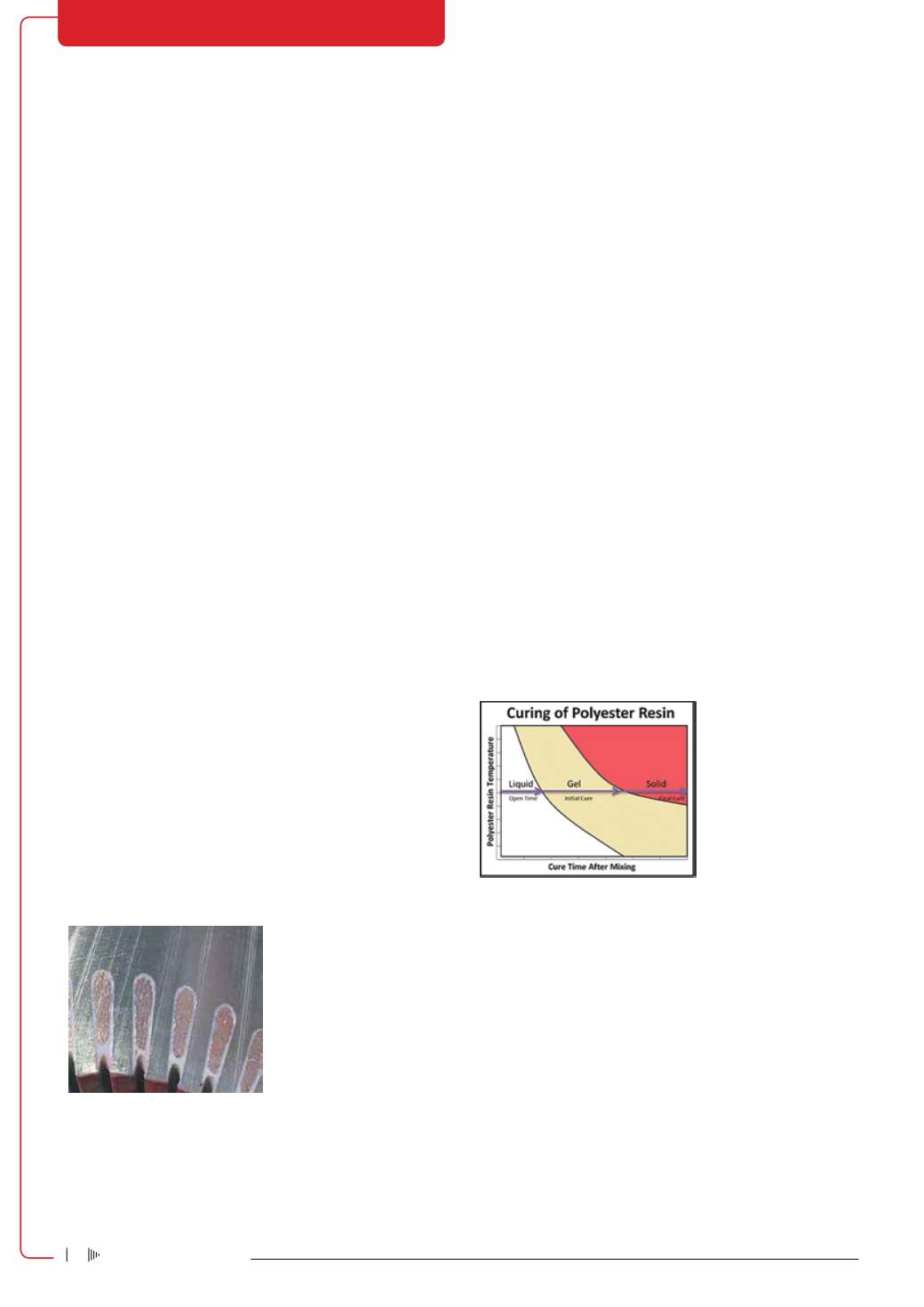

DRIVES, MOTORS + SWITCHGEAR
Hybrid curing systems
to improve rotational machine
resin impregnation efficiency
By J de Beer, Tectra Automation
In modern rotational machine manufacturing plants production rate, energy efficiency and ease of maintenance
must be obtained from each production machine.
E
xisting resin impregnation machines used to impregnate sec-
ondary insolation onto rotating machines still rely on outdated
curing methods. Where energy efficiency and high production
rates are required, a possible combination of resin curing systems to
overcome one another’s shortcomings could result in greater energy
efficiency, production rates and ease of maintenance.
During themanufacturing of rotational machines such as electrical
motors and alternators, the rotor is impregnatedwith a resin as second-
ary insulation [1]. This resin impregnation is crucial to the performance
of the rotational machine as it keeps the copper coils together when
in operation up to 18 000 rpm. This prevents coils loosening due to
vibration and causing internal machine damage. Resin impregnation
also increases the thermal conductivity of the rotor coil, thereby con-
ducting heat away from the core while protecting the coil from water
damage. During curing of the impregnation resin, the curing time can
be decreased using a number of curing methods [2]. It is possible to
use a number of different curingmethods depending on the part, cycle
time and preferred resin. This research will focus on the possibility
of combining existing curing methods into a hybrid curing system in
order to determine if decreased curing times, increased production
rates and increased electrical efficiency can be achieved while the
resin’s mechanical properties do not decrease.
Figure 1
is an illustra-
tion of secondary insulation,
also called ground insulation,
on an alternator rotor where the
impregnated resin can be seen.
Figure 1:
Secondary resin insulation hold-
ing coils together [6].
During the resin curing process, internal crosslinking, which trans-
forms the structure of the resin from a liquid to an infusible solid
structure, takes place. This process is also called polymerisation.
Fig-
ure 2
is a graphical illustration of typical resin curing phases. It can be
seen from this illustration that resin, typically, has three curing stages
where it crosses from one stage to another with the addition of heat.
The heat required to cure resin can be supplied by an external source
or heat created by the polymerisation process. The external process
of curing resin is an exothermal process, which can be initiated by an
initiator. To cure resin, a number of processes have been developed
over the years. Some processes cure by increasing the temperature
of the resin, while the addition of a photo initiator makes it possible
to cure resin with UV radiation [4]. Curing resin with a microwave is
also possible – as the microwaves heat up, the resin polymerisation
takes place. As the resin is subjected to additional external thermal
heat contributing to the ex-
isting thermal heat gener-
ated by the polymerisation
process, the resin curing
speed is increased and
the curing time decreased.
Figure 2:
Curing of resin [3].
Each of these technologies has their own advantages and disadvan-
tages. When early impregnation machines where developed, energy
was relatively inexpensive and readily available. This led to most of
the early impregnation machines making use of thermal curing as a
preferred curing method.
Impregnationmachines, typically, have four stages: initial heating
of the part; impregnating of the part with resin; curing of the resin;
and cooling of the part.
Figure 3
shows an existing impregnation
machine where the process flow is from left to right. Thermal cur-
ing requires a large amount of energy to cure resin – typically in the
region of 190 °C. These early impregnation machines require a large
amount of maintenance due to a high number of internal moving parts
and elevated temperatures, which cause parts to fail prematurely.
Traditional thermal convection ovens have to heat up large volumes
of air in order to heat the resin for curing. Alternative curing sources
such as UV radiation can be focused directly on to the part, limiting
unwanted energy being consumed.
Electricity+Control
November ‘15
4

















